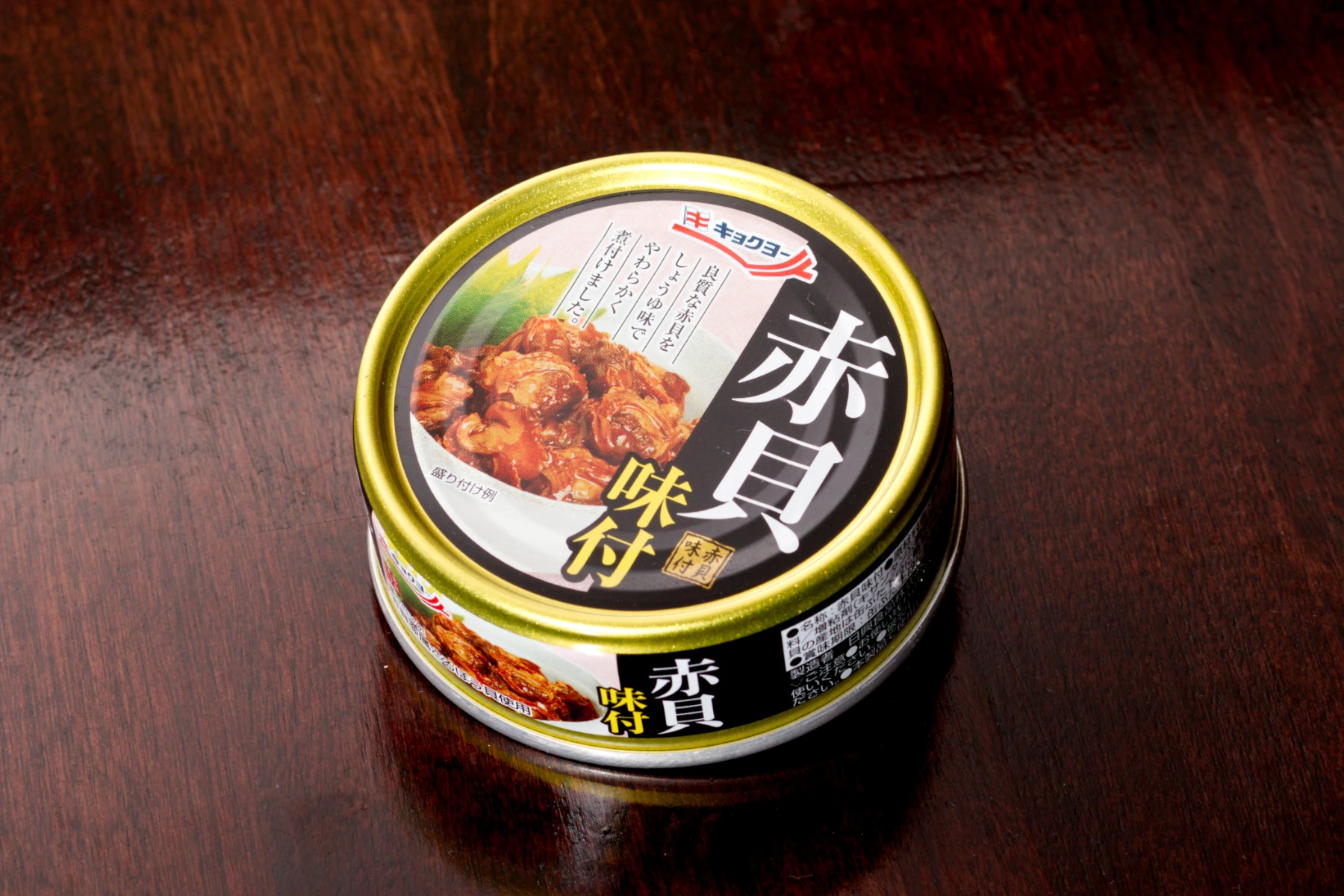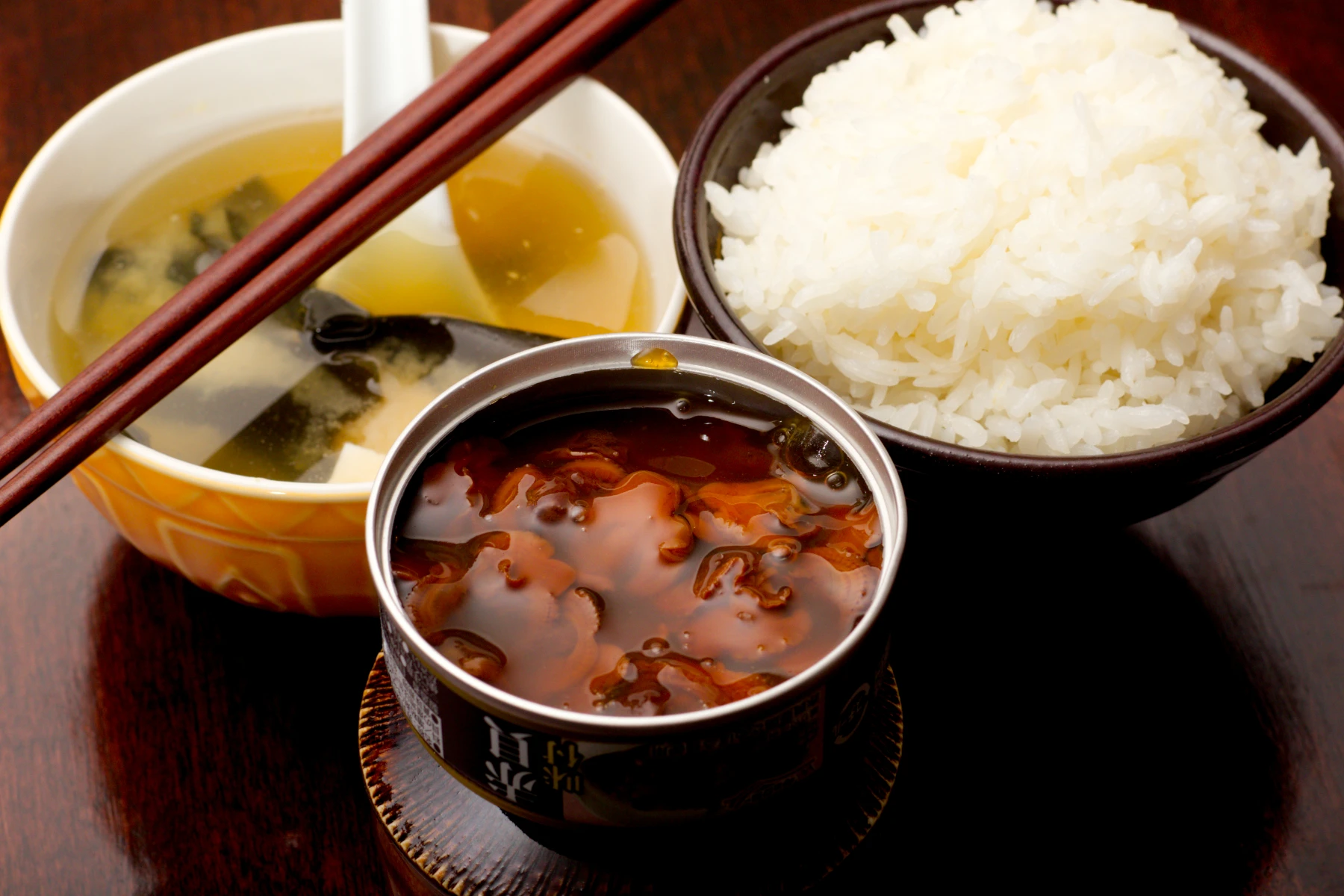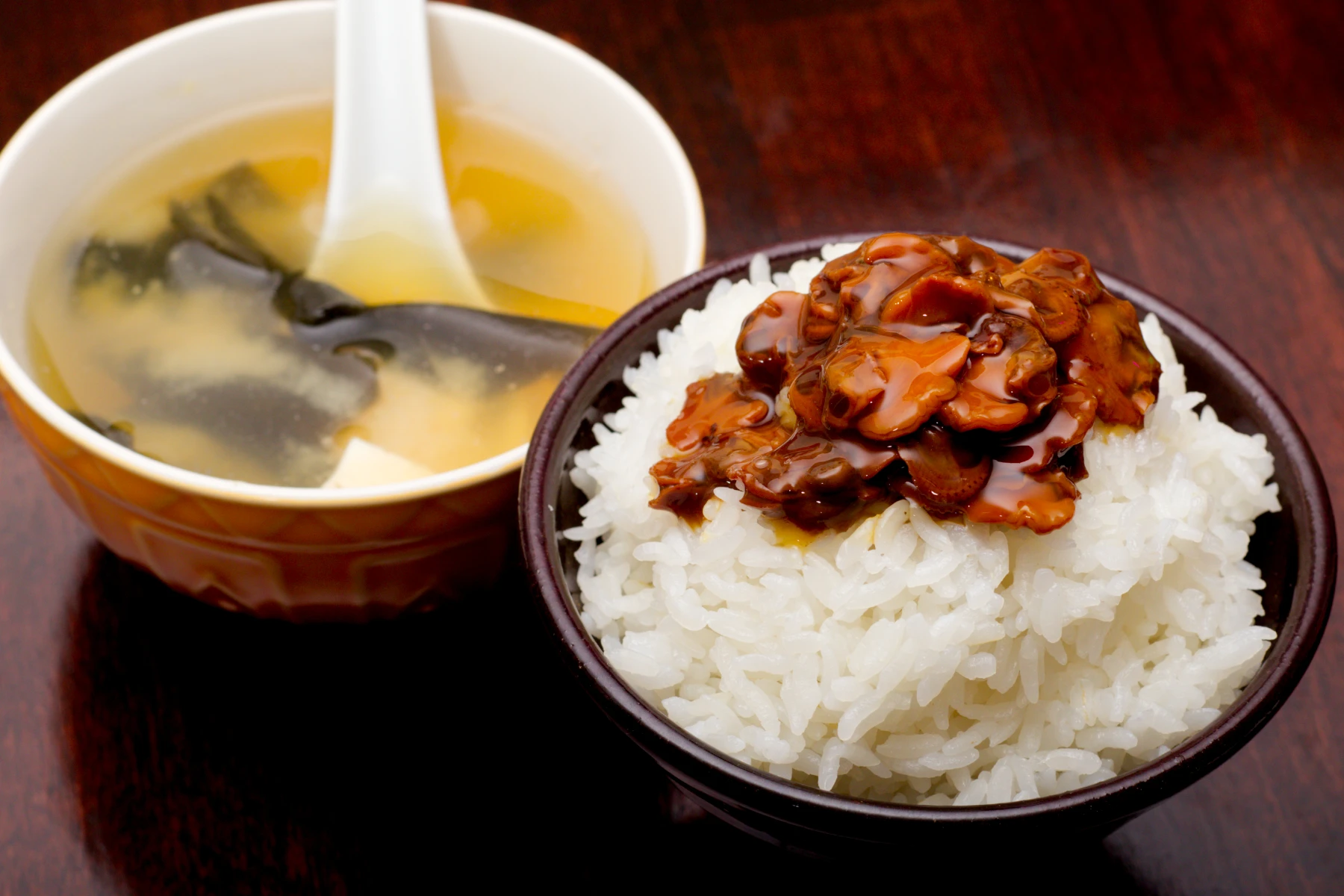Kyokuyo Akagai Ajitsuke
A Bloody Conspiracy!
Originally Published: Thursday, April 13, 2023
Specs
 Hemophiles welcome.
Hemophiles welcome.Akagai AKA Ark Clams AKA Blood Clams
Kyokuyo Co. is a Japanese seafood company that specializes in fresh seafood and supplying seafood restaurants with sushi-grade fish. However, this is not a pretentious sushi blog but a pretentious canned fish blog, so I will be looking at one of their preserved products instead. The little tin on the menu today is their Akagai - Ajitsuke or their Seasoned Ark Clams.
Ark clams are a family of smallish clams mostly found in the Pacific Ocean. The akagai is a species in the ark clam family and is commonly called blood clam in English. It is a feature of many high-end sushi restaurants as part of their nigiri menu. There are technically a few different species of ark clams that are colloquially referred to as blood clams, named such due to their natural red flesh (imparted by the same hemoglobin that gives our blood its red hue).
The naming of clams is a prickly subject that is mired with controversies in seafood labelling practices, which many people have literally devoted their doctorate studies to. In general, it’s important to remember that even experts often have a tough time telling different species of fish and seafood apart, and that allows a lot of room for fraud and underhanded business practices. I will explore this tangent a little more later.
For now, keep scrolling if you want to read about me eating some bloody clams.
Those Bloody Clams!
Before eating these little squibs, I just want to talk about Ajitsuke. Ajitsuke is a very generic term that loosely translates to “seasoned” or “spiced”. Ajitsuke in general usage is a combination of soy, cooking sake, and/or broth as the base for seasoning an ingredient. It generally also implies that the product has been marinating in the sauce for enough time that the marinade has seeped into the ingredient. A common ajitsuke item is an ajitama (seasoned egg), the brownish eggs often found in bowls of ramen.
Opening the can was a fun little experience as it gave a satisfying pop not unlike opening a fresh can of tennis balls. The smell of sweet soy seeped out from the seam of the seal. The lid came off easily and completely in one motion.
The contents had a glossy sheen that reminded me of treacle or dark maple syrup. The smell permeating from the dark liquid had a toffee and brown sugar smell in addition to the savoury soy. The clams didn’t contribute too much to the overall aroma since the sauce itself was a bit overpowering. Picking out an individual piece of clam allowed me to get a better whiff and it did have a mild oceanic, kelpy smell.
 Syrupy is not how I imagined I would ever describe clams.
Syrupy is not how I imagined I would ever describe clams.Tasting began with a dip in the sauce. The overwhelming flavour was just sweet, almost too sweet; comparing it to a syrup would not be unfair. It was fairly reminiscent of a very sweet teriyaki sauce from a food court teppanyaki stall.
I bit into a clam, hoping that there would be flavours present that could balance the sweet, but alas. The clam, after undergoing the ajitsuke process, was imbued with the very same sweetness as the sauce. There was not a lot of salt or spice to balance out the sugar, making it a bit of a saccharine experience.
After coming down from my sugar high, I gave the clams another taste. There were some subtle flavours in it that were more interesting than the initial impression. The taste of the ocean was very present and reminded me of swimming through a kelp forest. Also present was the fishiness that was unique to shells and bivalves and distinct from fish like mackerel. The flavours reminded me of conpoy (Chinese dried scallops) or the concentrated essence of scallop skirts; it’s a sweeter, more umami, but ultimately funkier flavour compared to fish. There was a bit of lingering muddiness that was mostly masked by the sweet soy concoction. The texture of the clams was probably the most pleasant part of the whole experience as they managed to preserve the chewiness of a fresh clam without any sponginess or gumminess.
You Promised a Tangent
Ah yes… gather ‘round this grizzled captain and let me tell thee a tale.
Turns out, because of the weird laws governing labelling of seafood, most seafood items for sale don’t need to be completely honest in their depiction of their products. The vendor has to make sure they’re not outright lying about what’s in the package, but there are a lot of grey areas in what vendors can get away with, especially if the product is imported.
This product undergoes one such underhanded tactic. The label on the can in giant, bold characters indicate the contents are none other than akagai (赤貝) but looking more closely on the side of the can reveals a tiny, inconspicuous line that says the contents are actually made with sarubougai (猿頰貝), which are in the same ark clam family, but it’s not one of the many species commonly called akagai or blood clams.
 You sit on a throne of LIES!
You sit on a throne of LIES!“GASP!” I hear you cry, “A POX ON ALL THEIR HOUSES!” but I also hear the few in the back asking, “Uhh… what?”.
Well, there’s more! Besides the morally and legally ambiguous labelling schemes a vendor can utilize, sometimes vendors will also just straight up lie about what they’re selling, illegal style. Back in the sweet heady days of the early 2010’s, the non-profit group Oceana performed a study that found about 33 percent of seafood on the market were mislabelled, either maliciously or accidentally. They were able to confirm their findings through DNA analysis.[1]
“But captain,” you utter, “that was like, a hundred years ago. Surely, they must have fixed this by now?”
Well… Oceana conducted another round of DNA testing in 2021 and found the mislabelling rate in Canada to be a staggering 46 percent.[2] Mislabelling fish is of course a major issue since cheaper species are often passed off as more expensive species to unsuspecting consumers, and certain species that have been banned from sale due to health concerns sometimes sneak back into the supply chain.
![Flounder [the Disney character] is a yellow and blue tropical fish (despite the name, he is not a flounder) (Source: Wikipedia) Kyokuyo Akagai Ajitsuke Opened Can](/img/kyokuyo-akagai-ajitsuke-04.webp) Next you’re going to tell me Flounder from The Little Mermaid isn’t a real flounder.
Next you’re going to tell me Flounder from The Little Mermaid isn’t a real flounder.This clam mix-up isn’t nearly as malicious since they did mark on the can (albeit obfuscated) what the contents actually are. The English language label that is required for sale in Canada also called the product ark clams as opposed to akagai or blood clams. However, blood clams generally fetch a much higher price when compared to sarubougai, so it’s no big surprise they decided to go with a cheaper ingredient while trying to pass it off as something else. There is no doubt some shenanigans going on here and it’s left a bad taste in my mouth.
A Clam-lamity
In the end, the product itself was mediocre at best, and diabetes inducing at worst. Overall, the balance of flavours was simply not present. I think this would be a difficult product to enjoy on its own. However, I could see merit for it as part of a larger dining experience, such as one component in a bento box.
The unfortunate labelling of the product brought to attention one of the pervasive issues plaguing the world of seafood. While not a fault with the quality or taste of the product, the practice is still underhanded and should be brought to light. The irony is, I would have bought the product whether it said akagai or sarubougai, since either would’ve made an interesting entry for the blog.
The actual rating is a chum. I’m not entirely confident I wasn’t influenced by the potential bamboozling, but the tasting experience left me with an overwhelming sense of meh. I would recommend skipping this unless you are morbidly curious.
References
- Oceana Study Reveals Seafood Fraud Nationwide (Oceana, 2013)
- Canada Still Lags Behind Other Countries in Tackling Seafood Fraud (Oceana, 2021)